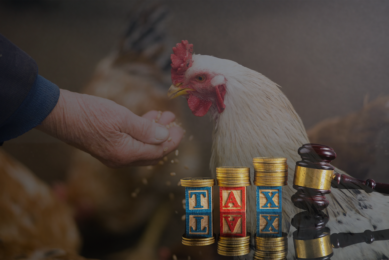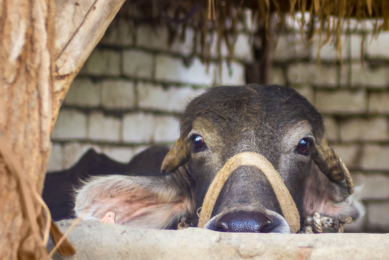Algae cultivation profitable by 2025

Four years after the first optimistic calculations, the experimental cultivation of algae appears to be meeting expectations. This is based on experiments at the Wageningen research facility AlgaePARC in the Netherlands.
Production costs have been more than halved, while the profit made on some crop components already exceeds production costs. According to René Wijffels, Professor of Bioprocess Engineering at Wageningen University, the sustainable production of raw materials for food and animal feed, chemicals, materials and biofuels is well on its way to be economically feasible by 2025.
Costs vary
The Wageningen UR Bioprocess Engineering Chair group and Food & Biobased Research carry out joint algae research at AlgaePARC. Using calculations based on data taken from seven algae cultivation systems, Wageningen UR has shown how the cost of micro-algae cultivation in the Netherlands varies depending on the cultivation method used. For example, the cost of algae produced in the commonly used, cheap model – the raceway pond – is more than twice that produced using the modern flat panel system. In the raceway, water and algae are stored in an open pond and kept in constant motion using a paddle wheel.
By 2010, few improvements were expected in this system. The flat panel system is a closed system, with light let in through a plastic cover over the top of the cushion-shaped container. Whereas the production cost of a kilogram of dried algae totals about six euros using the raceway system, it is now just 2.26 euros using the flat panel system. Using the same system – although scaled up to a surface area of 100 hectares – on the Canary Islands, production costs have been reduced to just 1.37 euros per kilogram. ‘Applying scientific research will allow the design to be further refined by 2025’, says Professor Wijffels. ‘The cost in sunny Mediterranean countries could then be reduced to 0.75 euros per kilogram’.
Refinery
Being able to produce large quantities of biomass is not however the same as having a commercial product. Before this can happen, the biomass needs to be separated into components and purified. The main component groups are proteins, hydrocarbons, fats and other useful chemical compounds such as vitamins, antioxidants and colourants. The researchers estimate the bio-refinery costs to be 1–1.50 euros per kilogram of biomass. ‘For the first time, we have been able to estimate this cost with a fairly high level of reliability, and it will be reduced much further in the future’, explains Professor Wijffels.
Market value
Production and refinery costs together total about 1.75–2.25 euros per kilogram (including infrastructure, labour, energy, etc.), but there is also a profit to be made from each of the separate components sold on a market currently dominated by materials of fossil origin. There is a demand for final products made from algae, such as biokerosene, bulk chemicals, paint and coatings and various biopolymers and their additives. However, choices first need to be made, so that no unprofitable components are left over in the production chain. For example, if only biokerosene and basic chemicals are produced from the algae biomass, its value is about two euros per kilogram – roughly equal to the production cost. Although biofuels are much in demand (about 10 000 tonnes per year in Europe for biokerosene), they do not make much ‘at the pump’ – about 500 euros per ton. By selling the costly food additives (such as poly unsaturated fats, worth 10 000–100 000 euros per ton), the value of algae increases to more than eight euros per kilogram. These calculations are also based on a scaling-up to 100 hectares of the existing semi-industrial research models at AlgaePARC.
Greening of the economy
Food & Biobased Research and the Bioprocess Engineering Chair group believe that the future is bright for algae cultivation, but note that a few essential steps need to be taken at various places in the production chain. Examples are the use of waste flows or CO2 from the food industry as a ‘fertiliser’ for the algae, innovative reactors, the selection and development of the best algae species and the scaling-up and testing of production systems at various sunny locations in southern Europe. Such developments should reduce the cost price even further and help in the green transition to a carbon-neutral economy. ‘The costly algae components could be the first to enter the market, based on their quality and functionality’, says Professor Wijffels. ‘Their high market value shows the green sustainable gold that is to be found in algae’.
Financial support
The development of an algae production chain would not be possible without the financial support of the government and the business community. The research carried out at AlgaePARC is supported by 50 companies and Biosolar Cells, the Centre for Biobased Economy, the European Commission, NWO, Technology Foundation STW, TKI Biobased Economy, the province of Gelderland and Wetsus. Various educational activities have also been developed relating to algae cultivation.
Source: Wageningen University











